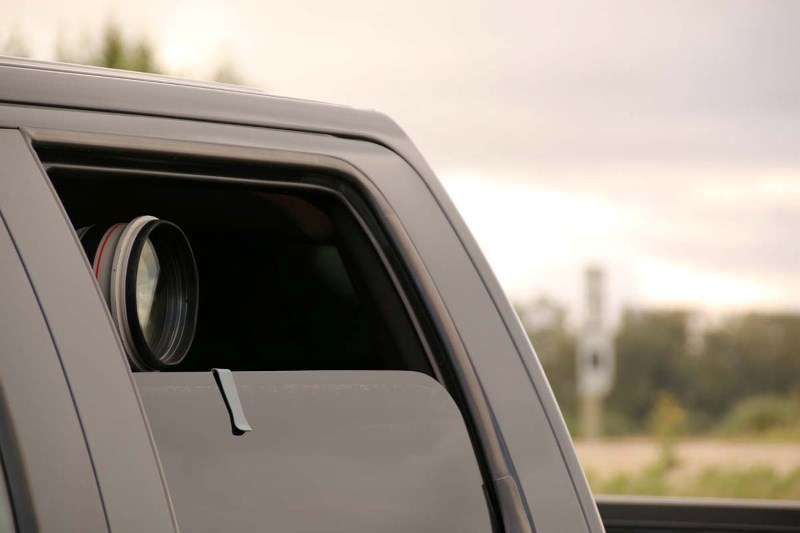Sharp-eyed motorists in St. Albert may have noticed some different photo radar techniques being used around the city in recent weeks.
At the beginning of July, Global Traffic Group took over the contract to provide photo enforcement in St. Albert, bringing with them a different way of doing things.
Gone are the photo radar vans everyone knew to look out for – Global Traffic Group has different vehicles, many of which are pick-up trucks.
They use different equipment that allows them to position their vehicles further back from the road.
“There’s absolutely nothing secretive that we do,” said Richard Kracher, general manager of Global Traffic Group at the company’s office in Devon.
“The most profound change is that it’s switched from radar to laser,” Kracher said.
While radar has its place – it’s handier in a moving police vehicle, for example – Kracher said they believe for a stationary unit, laser is the preferable tool.
“The reason for that is that it’s vehicle specific,” he said. Radar is designed to detect all the moving things – a laser is aimed at a specifically targeted item.
Their photo laser units also have a higher range of operation than photo radar.
“Laser generates its own light and can operate in distances exceeding 400 metres,” he said.
“In essence the immediate change you see at the side of the road is that the vehicle that is detecting your speed may very well be back in a position you didn’t expect,” Kracher said.
Rather than pointing the unit out the front window like is usually done with radar, they need an open air shot and so will aim out a side window or a back window.
“The vehicles tend to be pointed either perpendicular to the road or facing the other way. That’s not trickery at all, it’s just the way it functions,” he said.
While they’re not trying to hide the vehicles Kracher said, rather than people just slowing down for speed traps, they’d like to see an overall change in driver behaviour to slow down.
The laser units are made up of professional grade cameras and lenses, “the best law enforcement laser we think exists” and a tablet.
The officers operating the unit can aim it at the specific vehicles – it’s a fairly hands-on procedure for the in-vehicle units.
There are also smaller units that can go in other objects, like pylons or, as seen lately in St. Albert, garbage can-like structures, that will have an officer stationed nearby.
“We’re not limited to just vehicles on the side of the road,” Kracher said.
Locations for speed enforcement aren’t determined by Global Traffic Group. They get locations which are signed off on by the RCMP – though there’s input from the city as well.
Kracher says they will try and randomize which locations they hit when.
Global Traffic Group will be in St. Albert seven days a week at various times of day.
Many people do not realize that the operators who work the units are actually peace officers.
“The peace officers that are operating are indeed duly appointed Alberta peace officers,” Kracher said. Peace officers are appointed by the provincial government.
The contractor will also take charge of the intersection cameras, and will be installing their own technology at the same intersections where there are already red light and speed on green enforcement.
“It’s a technology we’ve imported from Italy,” Kracher said, noting their system is being used already in Spruce Grove.
Their method uses two camera lenses to simulate 3-D computer vision and uses that to establish the speed a vehicle is going.
“All speed is determined by distance over time, what this one does is it does it optically as opposed to something like radar, laser or loops on the road,” Kracher said.
The use of photogrammetry means they don’t have to dig up the road to install the equipment, and it integrates the speed measurements and photos.
The contract, which was announced by the city in May, lasts for five years and took effect July 2.
Fair warning to drivers – with the start of school will come an increased presence in school zones, something Kracher noted they’re usually asked to do in September in the communities where they work.




